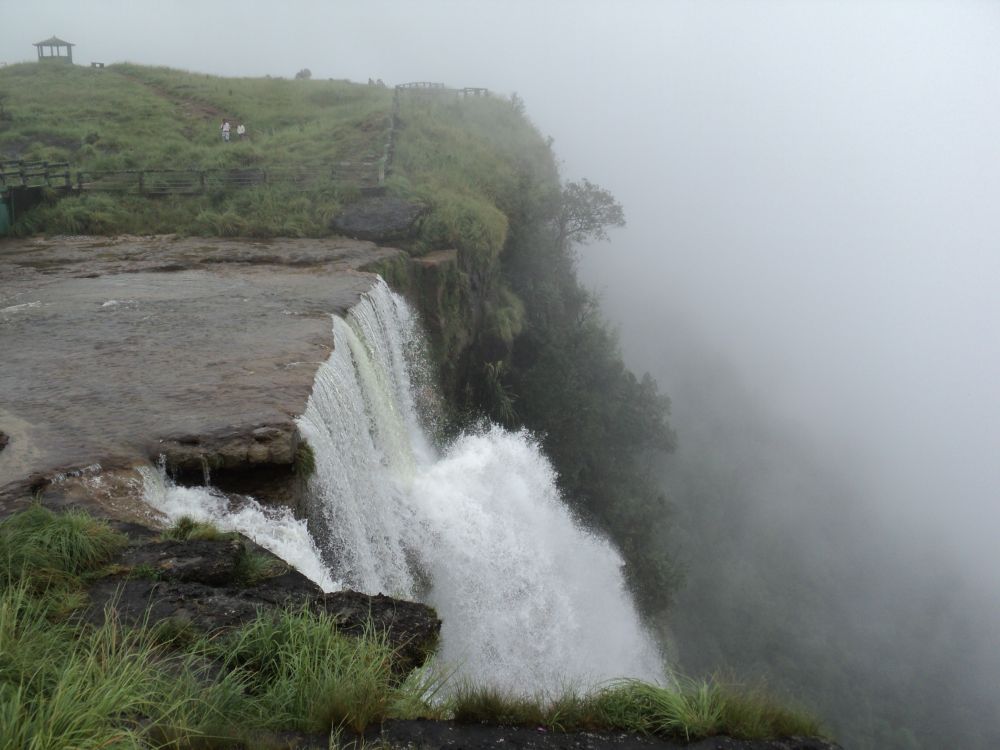

Located in the enthralling town of Cherrapunji (Sohra) in Meghalaya, India, the Nohsngithiang Falls, also known as the Seven Sisters Waterfalls, is one of the tallest waterfalls in India. The name Seven Sisters Waterfalls is attributed to the fact that the water splits into seven streams, symbolizing the seven northeastern states of India.
The history of tourism at the Seven Sisters Waterfalls is a testament to the beauty and allure of Cherrapunji. Despite its remote location and rugged terrain, the area has beckoned tourists for decades. Initially, it was mainly Indian explorers who traveled to witness the breathtaking vistas of the falls and the surrounding landscapes.
In the mid-20th century, with the advent of better road connectivity and the growth of tourism infrastructure, visitors from around the world started including Cherrapunji on their travel itineraries. The Nohsngithiang Falls, due to its spectacular presence, especially during the monsoon season, became a must-visit destination for nature enthusiasts and adventure seekers.
In recent years, there has been significant growth in eco-tourism and sustainable travel in Meghalaya. Tourists are increasingly interested in experiencing the local Khasi culture and exploring the rich biodiversity of the region.
Activities such as trekking, caving, and photography expeditions are gaining popularity, allowing visitors to immerse themselves in the natural beauty of the falls and the surrounding hills. Moreover, initiatives by the Meghalaya government to promote rural tourism have led to a surge in homestay options, providing tourists with authentic and personal experiences.
During the monsoon period, when the Nohsngithiang Falls is in full glory, there is a notable increase in visitors. However, sustainable tourism practices are encouraged to preserve the delicate ecosystems.
Cherrapunji, being one of the wettest places on earth, also presents unique weather-related attractions. The Living Root Bridges, a short distance from Nohsngithiang Falls, have been acknowledged as a UNESCO World Heritage site nomination, adding to the tourism appeal of the area.
Travelers' Note: The best time to visit Nohsngithiang Falls is during the monsoon season, from June to September, when the water is at its most voluminous. However, travelers should be prepared for heavy rains and should practice caution on the slippery paths.
The sustained and growing interest in Nohsngithiang Falls underscores the timeless appeal of natural wonders combined with cultural richness. As a beacon of northeastern India's tourism, Cherrapunji, with its Seven Sisters Waterfalls, continues to enchant visitors from across the globe, threading the narrative of serenity, sustainability, and exploration.